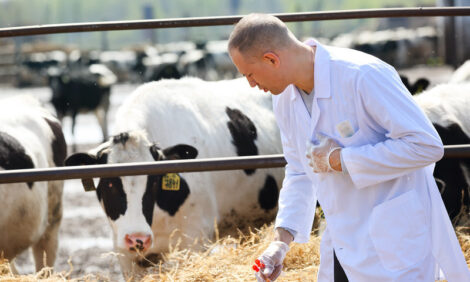



Netherlands Livestock and Products - Opportunities on the EU Market
This article provides the cattle industry data from the USDA FAS Livestock and Products Annual 2007 report for the Netherlands. A link to the full report is also provided. The full report includes all the tabular data which we have omitted from this article.Report Highlights
Due to CAP reforms and high feed costs, EU beef, pork and poultry production is under pressure. At the same time, the European Commission is enforcing EU legislation on imports. As a consequence, sector sourc es anticipate higher prices and increased opportunities for high value cuts, such as from the United States.EU Beef Trade
Background on EU Beef Imports
With an expected total domestic consumption of 8.6 million MT in 2007 (see Table I), the EU is the biggest beef and veal market in the world after the United States. Since 2003, the EU has been a net importer of beef (see graph below), mainly due to shrinking domestic production. In 2006, beef imports temporarily stabilized due to restrictions on the supply from Brazil and Argentina. As from 2007, EU beef imports are anticipated to recover and increase further (see GAIN Report E47060).
The EU controls its beef imports through quotas (see Table II). The main quota for fresh beef is the Hilton quota, mainly utilized by Argentina, and is predominantly sold to restaurants. For frozen beef, the European Commission (EC) administers four quotas, mainly filled by Brazil, Namibia and Botswana, and is predominantly processed into meat and other food products. An increasing volume of beef is imported outside the quotas, paying the full tariff rate. The tariff rate consists of an Ad Volarem Duty of 12.8 percent in addition to a Fixed Duty ranging between 1,414 and 3,034 Euro per MT. Imports outside the quota mainly consist of fresh beef, about 130,000 MT, and processed beef about 110,000 MT. The main suppliers, are in order of importance, Brazil, Argentina, and Uruguay.
Anticipated EU Beef Imports
The EC forecasts that EU beef and veal imports will rise by thirty percent during 2007-2014 (see “Prospects for Agricultural Markets and Income in the EU”; EC Report). Although EU import demand is growing, importers and traders question if EU beef imports will increase or even stabilize during 2008. Their assumption is based on the growing domestic demand in Argentina, as well as in Brazil. In addition, Brazilian producers might restrict their exports to the EU as their production doesn’t fully comply to EU animal registration and identification requirements (see the report of the Food and Veterinary Office of the EC; FVO Report). Such a measure might take away about forty to fifty percent of Brazilian exports to the EU, about 150,000 MT of beef. Another factor is that Brazil has ample opportunities to export to other markets. Also the EU enlargement had a negative effect on imports (see Table II) as new member states Romania and Bulgaria had to enforce the EU import regime. Following the scenario of tight supply, EU imports will stabilize or even decline, despite the growing demand. As a result, traders expect higher prices and increased opportunities for high value cuts, such as from the United States.
For many years, U.S. beef exports to the EU market have been constrained by the EU ban on imports of red meat from animals treated with growth hormones. U.S. non-hormone beef must come from cattle certified under the Non-Hormone Treated Cattle (NHTC) program in order to be eligible for export to the EU. The limited number of U.S. slaughter plants with EU approval also has had a negative impact on trade. Increased use of the NHTC program could, however, lead to a better economy of scale, and thus improve the competiveness of U.S. beef on the EU market. For further analysis of the EU and Benelux beef market see GAIN Report NL7008.
EU Beef Exports
During the past five years, the EU’s importance as a beef exporter on the world market diminished. During this period, average EU monthly exports declined from about 50,000 MT to less than 20,000 MT (see graph above). EU exports decreased due to increasing internal prices and the high Euro/USD exchange rate. Also cuts of export refunds affected EU beef exports. Currently, export refunds range from Euro 226 per MT for frozen boneless beef to Euro 1,034 per MT for fresh boneless beef. About a third of EU beef exports are destined to Russia. With about ten percent of Russian beef imports, the EU is, however, only a minor player on the Russian market. During the past five years, most EU beef has been replaced by Brazilian beef on the Russian market. Other important markets for EU beef are in close proximity of the EU, for example Norway and Switzerland.
Further Reading
|
|
- You can view the full report, including tables, by clicking here. |
List of Articles in this series
To view our complete list of 2007 Livestock and Products Annual reports, please click hereDecember 2007


